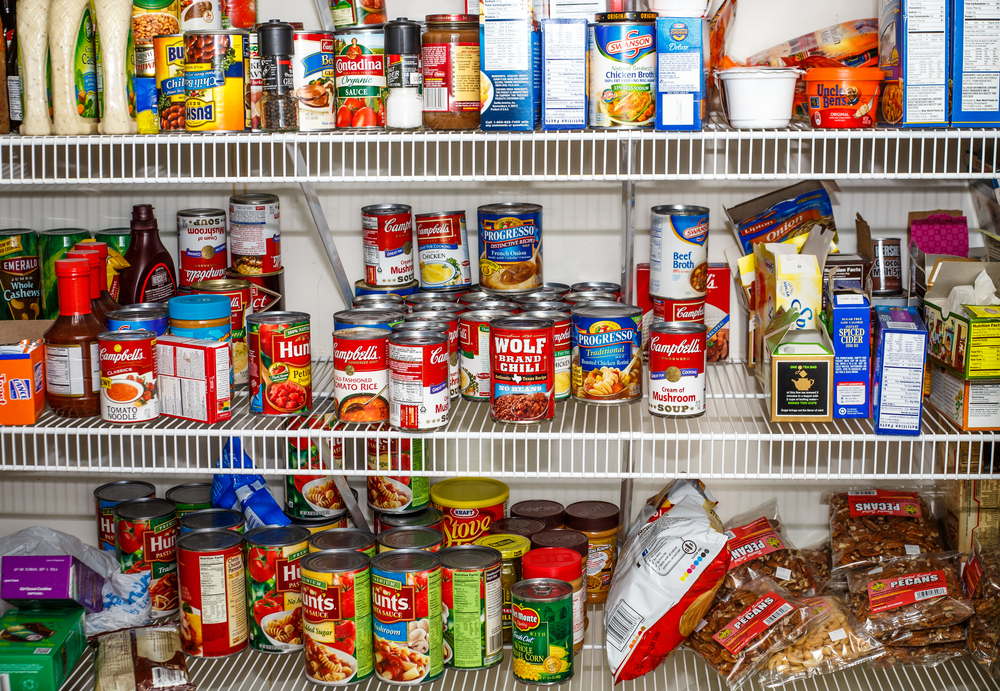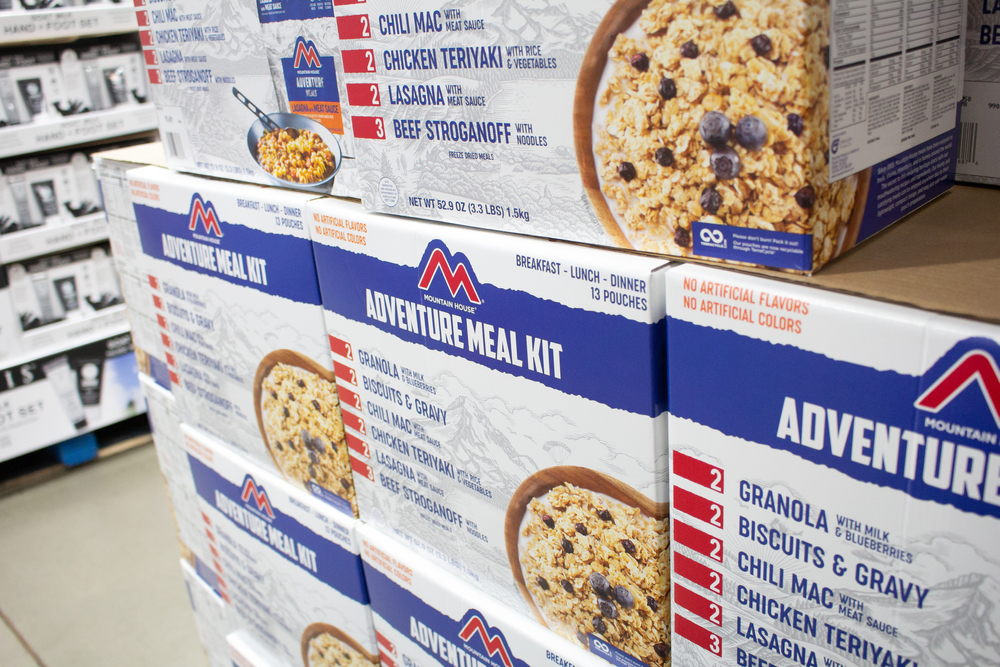


When it comes to emergency food storage, there are no “one size fits all” guidelines. More than a few people have ended up with strange foods in their closets and cupboards they don’t know what to do with. Germade, textured vegetable protein, and ABC soup mix are all featured on many well-meaning food storage lists.
The trick to assembling a supply of food for emergencies that is just right for your family is to be aware of long-standing myths that many people accept without question.
Here are 10 of those I take issue with, along with my reasons.
Unless you or someone in your family has issues eating wheat, it’s a frugal and versatile building block for your food storage pantry. Grind it up to make fresh flour for bread, tortillas, pastries, and much more.
However, millions of people have various health issues related to wheat, from gluten intolerance to celiac disease. Buckets of wheat might be useful for bartering, but why spend that money on a grain that causes severe illness for so many when you can stock up on other grains such as rice and oats instead?
There’s also a learning curve when it comes to wheat. Learning how to grind wheat to make flour and then use it for baking is not difficult. The problem arises when commonly used food storage calculators advise stocking up on at least 300 pounds of wheat per person for a year’s supply. Very few Americans have much practice with baking from scratch.
If you plan to stock up on wheat as a major component of your food storage, practice making many different recipes from scratch and ensure that it doesn’t cause any health issues.
Do beans have a long shelf life? Yes, they do. Do beans last forever? No, that’s a food storage myth. Over time, they can become so hard and dry that only a miracle could make them edible!
Try this trick if you have beans that refuse to soften with your usual cooking methods. Bring three cups of water to a boil, then add a cup of dried beans and a teaspoon of baking soda. Turn off the heat and allow the beans to soak for an hour or more. The beans should then be ready to use in any recipe.
Another option is to use a pressure cooker or, if all else fails, grind the beans and use the bean flour as a thickener in soups or add to any recipes for additional nutrients and fiber.
There’s no denying that food fatigue is a real thing. You’ve probably ordered a favorite food repeatedly at a restaurant, only to find out on the 14th or 15th serving that you didn’t like it so much after all.
When it comes to food storage, don’t assume that someone will eat a certain item they currently hate or have grown tired of just because they’re hungry. If you stock up on dozens of cans of turkey Tetrazzini, sooner or later the family will revolt, no matter how hungry they are.
Instead, stock up on versatile ingredients that can be combined in dozens of different ways, providing lots of variety to your emergency meals.
There’s nothing wrong with canned food and, in fact, it’s a great foundation to a food storage pantry. However, just like all foods, it ages and can become very unappetizing over time. For example, canned tuna can become mushy, and canned soup can change color and lose nutrients.
Also, many canned foods contain additives you might not care to eat, including high sodium and preservatives meant to lengthen shelf life. Canned food is also extremely heavy if you plan to include it in your bug-out bags.
Check the seams of canned food in storage and look for any sign of bulging, leaks, or rust that has corroded the can.
Look at almost any food package label, and you’ll see, “Store in a dark, dry, cool environment,” or words to that effect. Optimal storage conditions naturally extend the shelf life of food.
No matter how empty that garage, outbuilding, or attic might be—unless it’s air-conditioned or you live in a very cool climate year-round—storing your food there is a bad idea. If you don’t have any room in your home, it’s time to declutter and make room!
I’ve purchased a lot of food from reputable companies over the years, and most of these companies do a good job of processing food for storage and then packaging it in containers that help prolong its shelf life.
While it’s true that properly packed food can have a shelf life of 20 years or more, that all depends on how it’s been stored. It’s important to understand that when food is old, it doesn’t become poisonous or evaporate in its container. Rather, it loses nutrients, flavor, texture, and color. In a word, it becomes unappetizing. This is why storing your food in the coolest part of the house and in containers that keep out humidity, light, and pests is important.
Companies such as Mountain House sell meals-in-a-pouch that require only boiling water. Some of these meals are tasty, but others are barely fit for human consumption. These meals also contain numerous additives and GMO ingredients and can become boring over time.
You’ll find these meals sold in buckets with take-it-or-leave-it pre-selected options. Most also have unrealistic portion sizes and don’t provide the calories necessary for the average adult.
However, these meals are very lightweight, which is perfect for adding to a bug-out bag. Because they require only hot water, they’re useful in emergencies that give you little time to prep or cook. Just ensure you have at least one off-grid method for bringing water to a boil, such as an energy-efficient rocket stove.
In the end, you’ll want to stock up on more individual ingredients and fewer just-add-hot-water meals for a well-balanced food storage pantry.
This is the fantasy of many a prepper. Buy a huge amount of food, stash it away, and don’t give it a thought until it’s needed. This makes my list of food storage myths because that plan has a big problem: When everything does hit the fan, it’ll just be you, all that food, and some questions:
Many food storage companies have pre-packaged kits, such as “six month’s food supply for two people,” and it’s tempting to pull out the credit card and make the purchase. If you carefully review the contents of a kit like this, it might be a good idea if the price is right and you not only like all the foods included but also know how to prepare them. Just don’t be lulled into a false sense of security.
There’s a bit of sticker shock initially when you first begin to shop for freeze-dried food. If you’re accustomed to paying a few dollars for a block of cheddar cheese and then see a price of $35 for a can of freeze-dried cheddar, it can be alarming.
However, look at how many servings are in each container and consider how much it would cost to either grow or purchase that same food item and preserve it somehow on your own. Freeze-dried foods have been washed, trimmed, and cut so there is no waste, and they retain the same nutrients as their fresh counterparts.
Also, when you stock up on a wide variety of freeze-dried fruits, vegetables, meats, and dairy products, you can use them in any recipe you like. This can be more economical than you might think because you’ll be using only small amounts of the food at a time.
Here’s something that won’t ever make a list of food storage myths: The very best food storage plan is the one that you’ve customized yourself.
As long as you’re spending your hard-earned money, make this purchase carefully and don’t accept conventional wisdom just because it appears on numerous websites. Stock up on what suits your family best, and keep these 10 food storage myths in mind.


